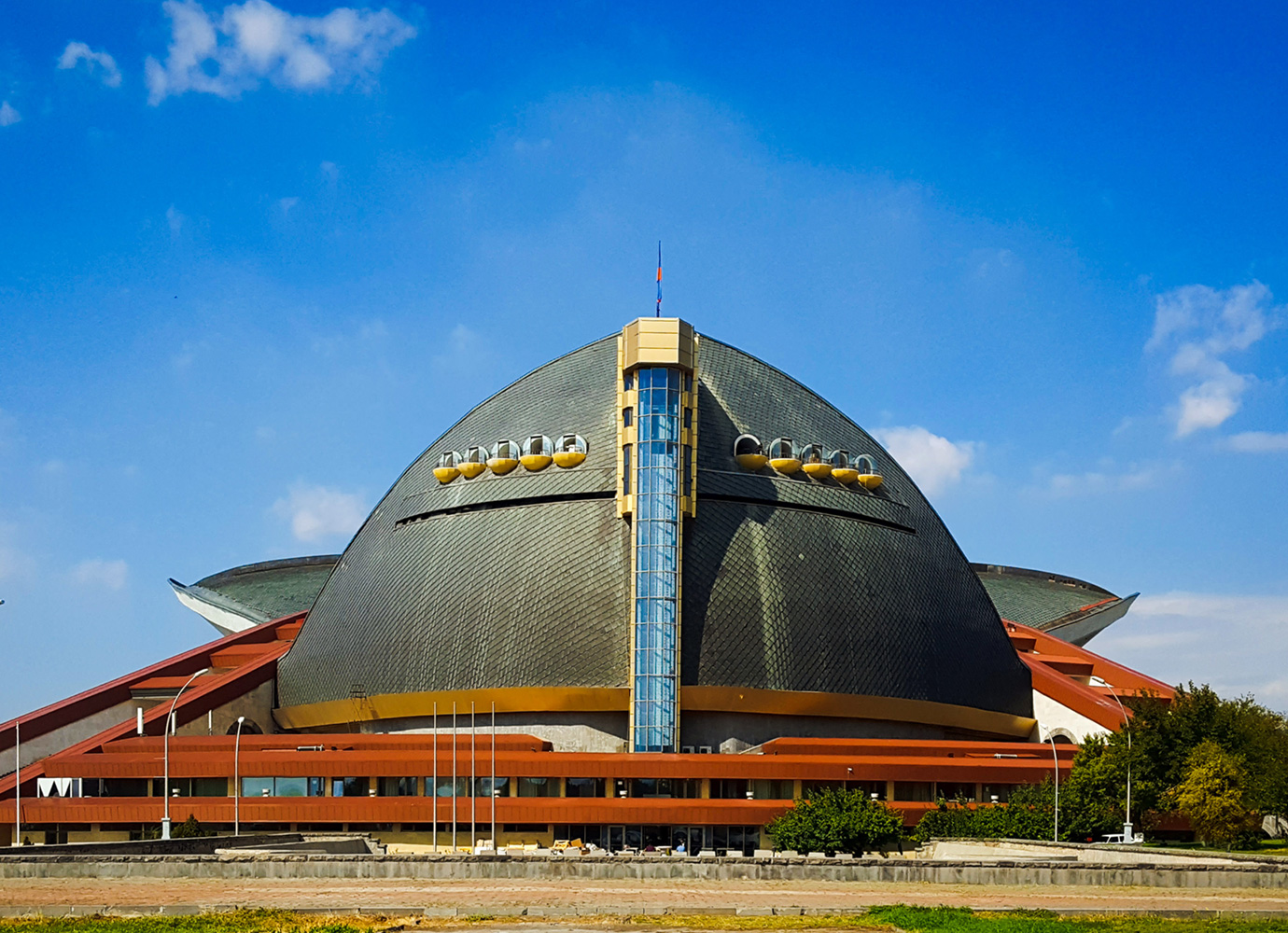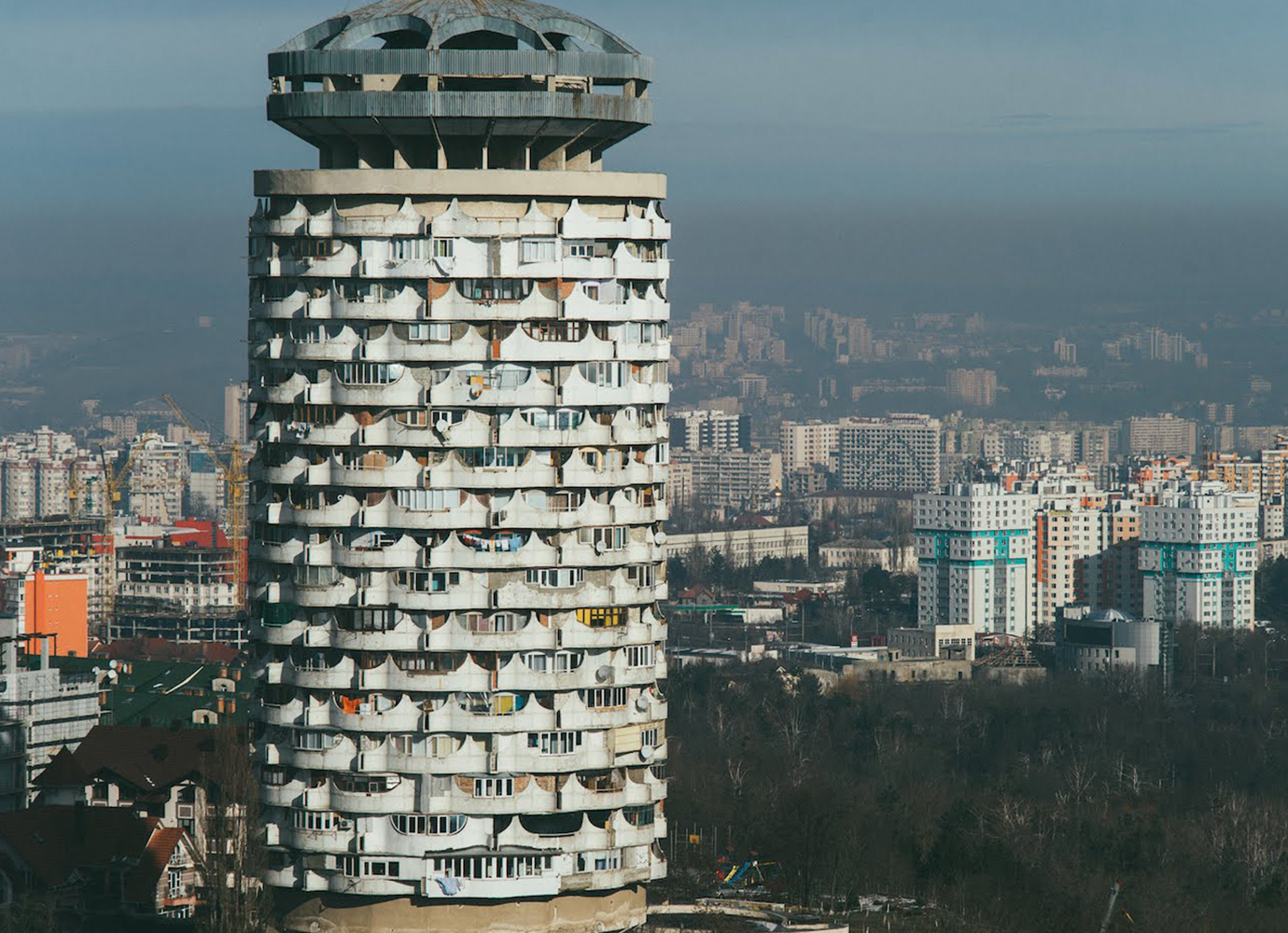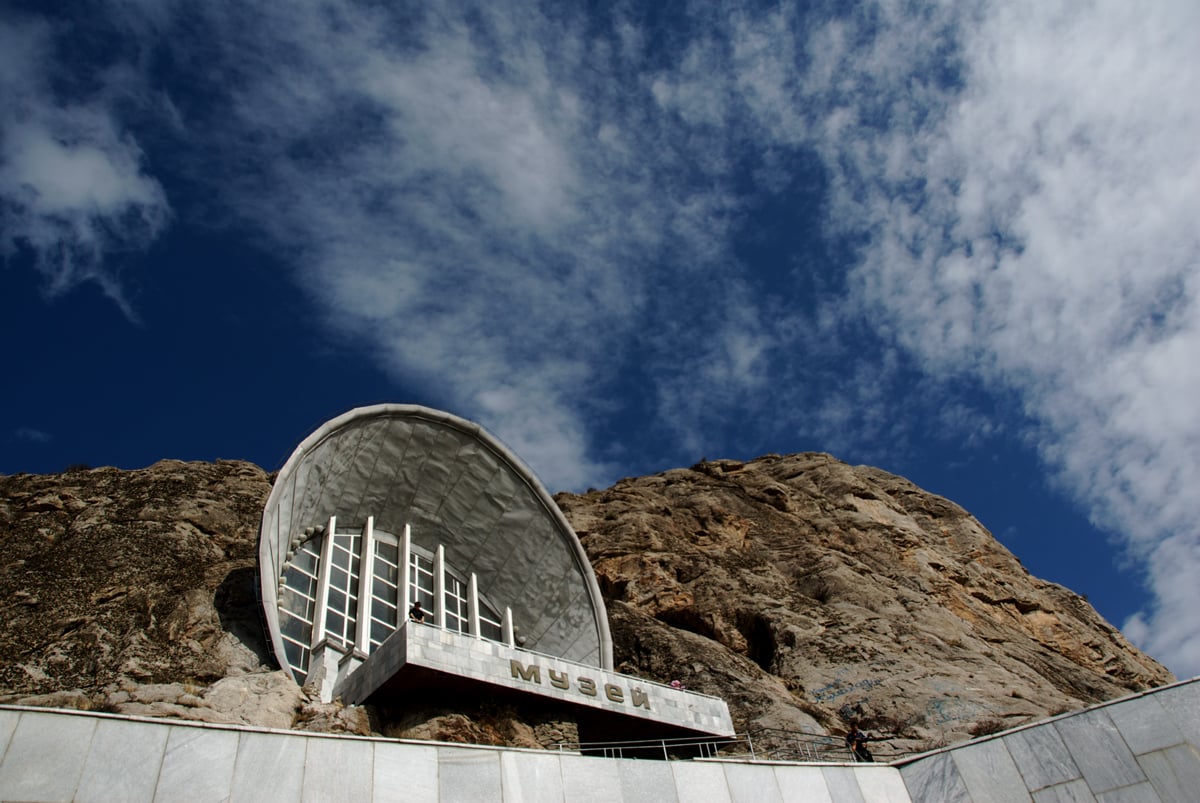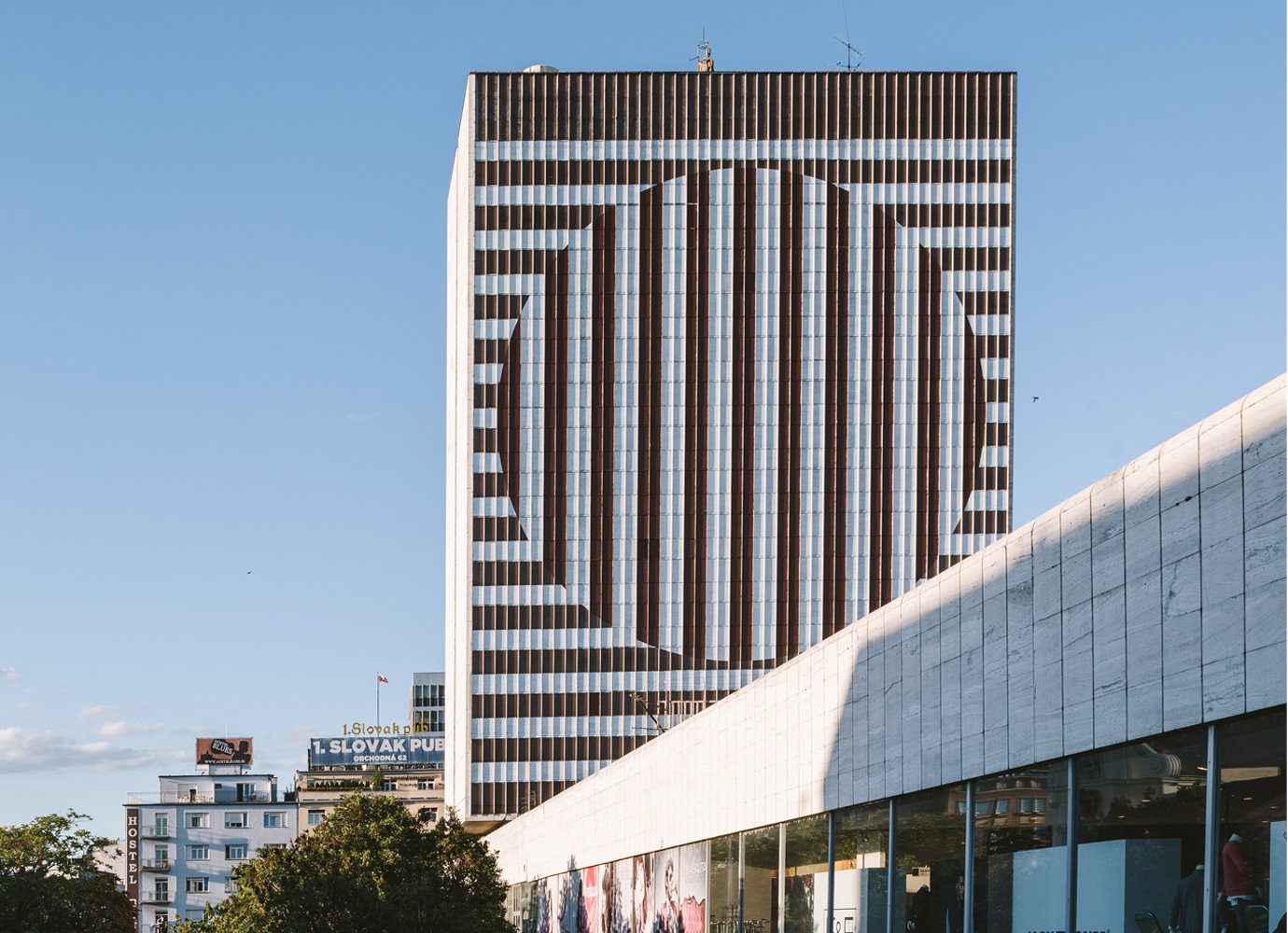Eastern Bloc architecture: communist culture and socialist sports | part 8
Eastern Bloc Architecture

This article is from our series Eastern Bloc Architecture: 50 Buildings that Defined an Era, a joint project between The Calvert Journal and Arch Daily
The State Circus of Moldova Image: Gikü under a CC license via Wikimedia Commons
The State Circus of Moldova (1981)
Ala Kirichenko and Simion Shoyhet. Chișinău, Moldova
At its opening in 1981, the State Circus of Moldova was an avant-garde venue with a never-seen-before design, new equipment, and grand rehearsal spaces, attracting performers from all over the world. The venue was considered the largest auditorium in the country, with its 40ft ring surrounded by 1,900 seats. Seven years after its opening, a sculpture by Matvey Levinson of two acrobatic clowns was installed above the main entrance, greeting crowds as they entered. But the good times weren’t to last. Moldova was ravaged by economic crisis and rapid inflation following the collapse of the Soviet Union, and the venue was abandoned in 2004. A decade later, the circus was brought to life once more by the Ministry of Culture and private companies, but with a smaller, 300-person capacity. Nevertheless, the current state of the structure is still relatively good, with only minor renovation work needed on decorative elements and the facade.
St Petersburg Sports Complex. Image: Monoklon under a CC license 4.0 via Wikimedia Commons
St Petersburg Sports Complex (1979-80)
I. M. Chaiko N. V. Baranov V. F. Yakovlev N. A. Vladislaveva A. P. Morozov. St Petersburg, Russia
Known during the Soviet era as the V. I. Lenin Sport & Concert Complex, St Petersburg Sports Complex sits in the city’s Moscovsky District, a commercial area enveloping Moscow Avenue, Victory Park, and the sports stadium itself. The circular arena attracts both visitors and locals alike, previous housing concerts, fairs, events and games. Today, however, the stadium sits at the heart of architectural controversy. The St. Petersburg Architects Union and the Monument Protection Society had campaigned for the structure to be classed as a Cultural Heritage Site, but the city’s government refused. Instead, in 2019, an open call was held for the arena’s reconstruction, leaving the options open for contestants to demolish, rebuild, or renovate the structure. But in January 2020, the roof, along with parts of the walls of the old stadium collapsed when some parts of the building were dismantled, likely due to illegal work taking place on the building.
Karen Demirchyan Complex. Image: Viiolmysan under a CC license 4.0 via Wikimedia Commons
Karen Demirchyan Complex (1983)
A. Tarkhanian, S. Khachikyan, G. Pogosyan and G. Mushegyan. Yerevan, Armenia
The Karen Demirchyan Sports and Concerts Complex sits in western Yerevan. The structure of the complex resembles a large bird with outspread wings, a unique design symbolising both superiority and freedom. The complex includes a main arena of up to 8,800 seats, a concert hall (1,900 seats), a sports hall (2,000 seats), diplomatic halls, and a foyer for exhibitions. Since its inception, the complex has housed hundreds of events and conferences, including concerts, sporting championships, and presidential inaugurations.
The complex was initially opened to the public in 1983, but a fire broke out several years later and forced the building’s management to close its doors until it was fully renovated in 1987. Among the structure’s other unique design elements is a staircase leading up to the Tsitsernakaberd Hill, and a turning tribune used to create additional seating space — a concept which snagged the project’s architects the USSR State Prize.
Image: Dostoyevsky Drama Theatre © Ludvig14 under a CC license 4.0 via Wikimedia Commons
Dostoyevsky Drama Theatre (1987)
Vladimir Somov. Veliky Novgorod, Russia
Under construction for almost 20 years, this eccentric building was born from the desire to bring theatre closer to the proletariat — leaving a successful legacy of more than 30 years of cultural activity. Located on the banks of the Volkov river, one of the building’s best accomplished design aspects is its relationship with its own immediate context and respect for the local heritage. Although at first glance its brutalist form is imposing and seemingly unrelated to its surroundings, the design was planned to stay out of sight from the city’s main historic viewpoints and landscapes. Its numerous facades, meanwhile, were either inspired by details from local Orthodox churches, or created to carefully frame the best views towards the river. The pale concrete exterior contrasts with the interior and its elaborate organic forms, where ceilings are covered with acoustic objectives, as well as with details of handrails and balconies. What was once a building symbol of progress, today has become a monument, a landmark of nostalgia and the ideals of an extinct state.
Image: V. Lenin Palace of Sports © Matyas Rehak via Shutterstock
V. Lenin Palace of Sports (1974)
V. Kostin, V. Marukov. Bishkek, Kyrgyzstan
The V. Lenin Palace of Sports is a multi-disciplinary sports venue. One of the most recognisable design elements is the visibility of the structure on the facade with the use of truss girders, which are expressed in the atrium of the main facade, complementing the sporadic appearance of sporting sculptures.
The remaining facades have geometric bas-relief details that give a unique texture to the concrete, or host features such as spiral staircases. Areas inside the structure include the entrance area esplanade, an auditorium with 3,000 seats and a stage, an administrative wing orthogonal to the inner courtyard, and a swimming pool equipped with a sauna and fitness center.
The building is still in use today, and better known as The Kojomkul Sports Palace. It is also on the list of Kyrgyz national monuments.


